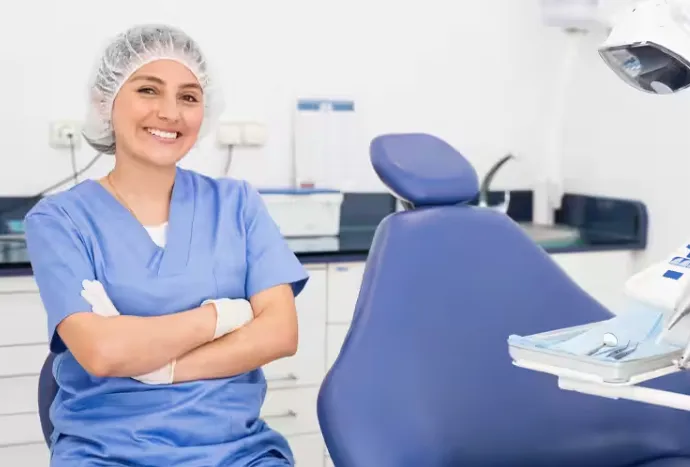The Evolution of Dental Care: From Ancient Wisdom to Modern Practice

Exploring dental care’s history reveals a narrative deeply ingrained in human history. It’s a story of innovation and bizarre practices that evolved from basic tooth extraction to sophisticated oral surgery and implantology.
Contents
- 1 Ancient Dental Practices: Oral Health in the Cradle of Civilization
- 2 The Middle Ages to the Renaissance: A Dark Age in Dentistry
- 3 18th to 19th Century Advancements in Dentistry
- 4 The 20th Century and Beyond A Revolution in Dental Techniques
- 5 The Role of Technology in Shaping Modern Dental Care
- 6 Current Trends in Dentistry: Modern Practices and Innovations
- 7 Conclusion
Ancient Dental Practices: Oral Health in the Cradle of Civilization
Imagine a time when dental hygiene was evolving and not part of our daily routine. For ancient civilizations like the Sumerians, Babylonians, and Egyptians, dental health was vital for spiritual and physical well-being. In Mesopotamia, a hymn to the toothworm, performed by a priest doctor, marks the earliest mention of dental problems.
Oral Health in Mesopotamia and Egypt
The first organized dental practices are traced back to these civilizations, where dental remnants and writings depict a focus on tooth worms and the use of medical texts like the Ebers Papyrus, offering remedies that involved honey, henbane, and cumin.
Chinese Insights and Innovations
Meanwhile, in China, dental care was tied to the flow of vital energy. The Yellow Emperor’s Inner Canon suggested that tooth pain might be related to heart disease. Acupuncture was used to alleviate dental distress, and amalgam fillings were employed with remarkable precision.
India’s Early Contributions
Ayurvedic texts from India yielded formulas regarding the manufacture of toothbrushes, the origins of which can be traced to chew sticks from the neem or acacia tree. Developed around the same time, the Indian practice of oil pulling remains a part of daily oral hygiene for many.
The Middle Ages to the Renaissance: A Dark Age in Dentistry
Brace yourself for a chapter characterized by little progress and significant tooth decay, both metaphorical and literal. The fall of Rome led to a decline in oral health care, with few advancements as Europe was gripped by the Dark Ages.
The Dentistry of Al-Andalus
In stark contrast, the Islamic Golden Age in Cordoba and Baghdad saw significant advancements in medical care, with scholars like Al-Zahrawi (Abulcasis) and his influential Kitab al-Tasrif detailing dental procedures and tools.
Dental Care During the Renaissance
The period of rebirth brought about new ideas and a demand for a return to classical learning. The first printed book on dentistry, Artzney Buchlein, emerged from Germany in 1530, ushering in a new era of sharing and developing dental knowledge.
18th to 19th Century Advancements in Dentistry
With the Enlightenment, the scientific method took root, and with it, dental care began to be treated with more empirical rigor. The barring wire for orthodontia was introduced, and Pierre Fauchard published the seminal Le Chirurgien Dentiste.
The Age of Enlightenment for Dental Science
Fauchard, often revered as the father of modern dentistry, introduced the concept of dental fillings and prosthetic dental devices, advancing the field significantly. His work laid the foundations for orthodontics as a specialized field.
The Industrial Revolution and Dentistry
Mechanization brought about improvements in dental precision and the introduction of porcelain teeth, offering more realistic appearances for dentures. The increased availability of sugar and refined foods, however, would lead to a surge in dental decay.
The 20th Century and Beyond A Revolution in Dental Techniques
The modern era of dentistry witnessed a cascade of technological breakthroughs that would transform the field into what it is today, introducing anesthetics, antibiotics, and the revolutionary practice of implantology.
The Advent of Anesthesia and Antibiotics
The invention of anesthesia by William Morton in 1846 allowed for complex and previously unbearable dental procedures to be performed. The discovery of penicillin and other antibiotics further revolutionized post-operative care, reducing infection rates dramatically.
Dental Implants: A Game-Changer in Oral Surgery
In the 20th century, dental implants were first successfully placed and remain an increasingly popular option for replacing missing teeth. This revolutionary procedure has continued to evolve with advancements in materials and techniques, notably in practices like those found in Lafayette, LA, where dental professionals have refined the implantation process to ensure better outcomes and greater patient satisfaction.
The Role of Technology in Shaping Modern Dental Care
From the electric dental drill to digital radiography, technology has been a catalyst for efficiency and precision in diagnosing and treating dental issues. It’s also paved the way for advancements in cosmetic dentistry.
The Digital Revolution
The introduction of digital imaging systems enabled dentists to capture high-resolution images of the mouth, aiding in diagnosis and treatment planning. CAD/CAM technology empowered the creation of dental restorations with remarkable accuracy and speed.
The Impact of Nanotechnology on Dentistry
Nanomaterials have opened new possibilities in dentistry, from stronger and more durable teeth to enhanced drug delivery within the oral cavity. Nanocomposites for fillings have reduced the need for extensive drilling and offer a more natural look.
Current Trends in Dentistry: Modern Practices and Innovations
Today, the field of dentistry is rapidly evolving, with a focus on preventive care, personalized medicine, and a growing recognition of the oral-systemic link. Innovative practices are shaping a future that is more patient-centered and less invasive.
Holistic Dentistry and its Growth
Holistic or integrative dentistry looks at the patient’s overall health and not just their oral symptoms. It emphasizes the use of biocompatible materials, the impact of diet on oral health, and the recognition of the consequences of dental procedures on the body.
Advanced Dental Materials and Techniques
The use of innovative dental materials, such as zirconia and bioactive cement, continues to raise the bar for aesthetics, durability, and biocompatibility. Non-invasive techniques like air abrasion and laser treatments are becoming more widespread.
Tele-dentistry and Its Emergence
The advent of tele-dentistry has begun to break down geographical barriers, enabling patients to consult with dentists remotely and receive advice and prescriptions with unprecedented convenience.
Conclusion
From ancient Ayurveda to modern technology, dentistry’s evolution reflects our pursuit of knowledge and innovation, highlighting the importance of oral health. We’ve progressed from simple methods like strings for tooth extraction to advanced dental implants, promising a future of safer, more effective treatments.
Moving forward, dental care will continue to evolve through research, education, and patient care. Each dentist visit assesses our oral health and connects us to our history and the future of wellness.




